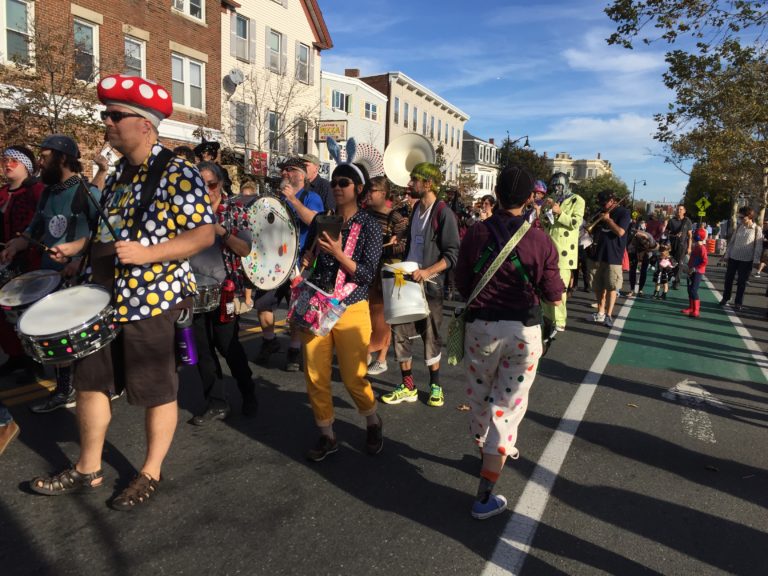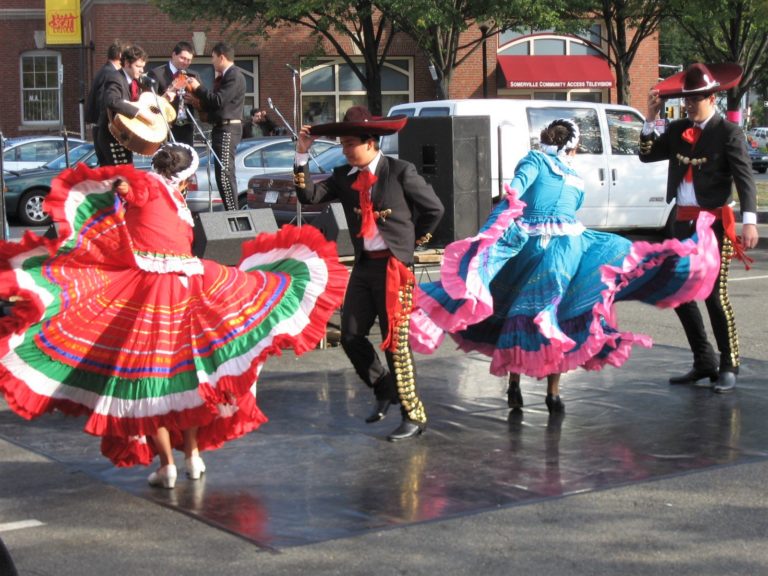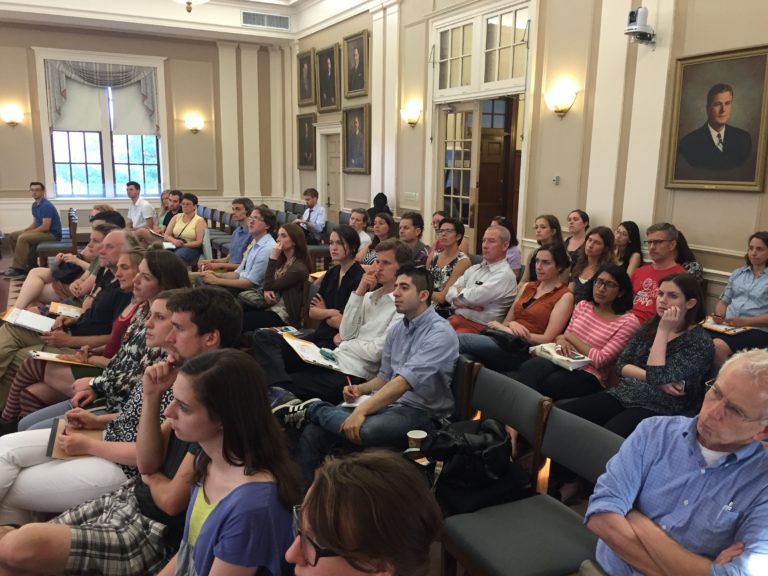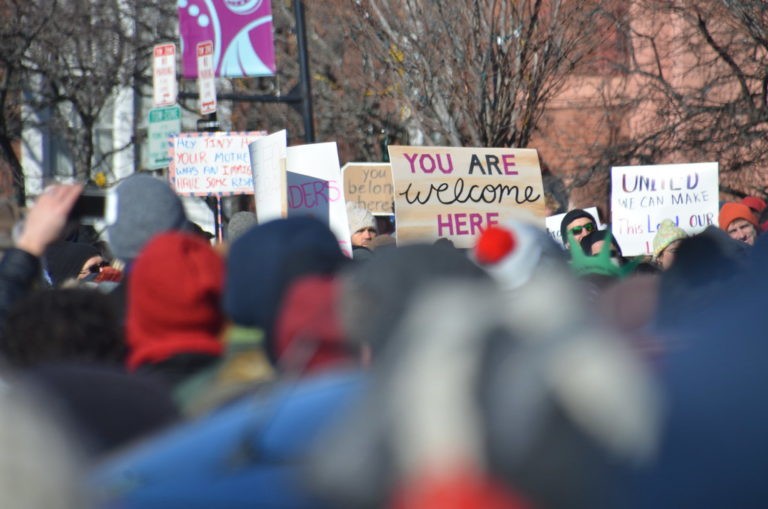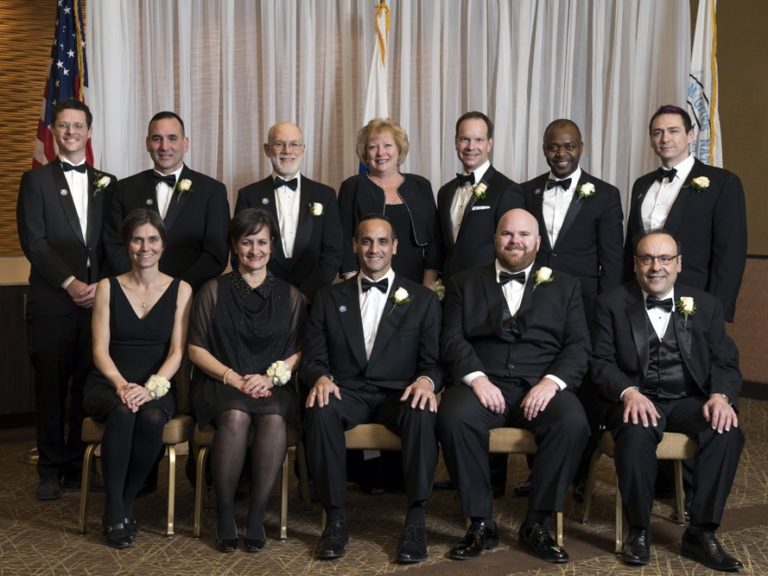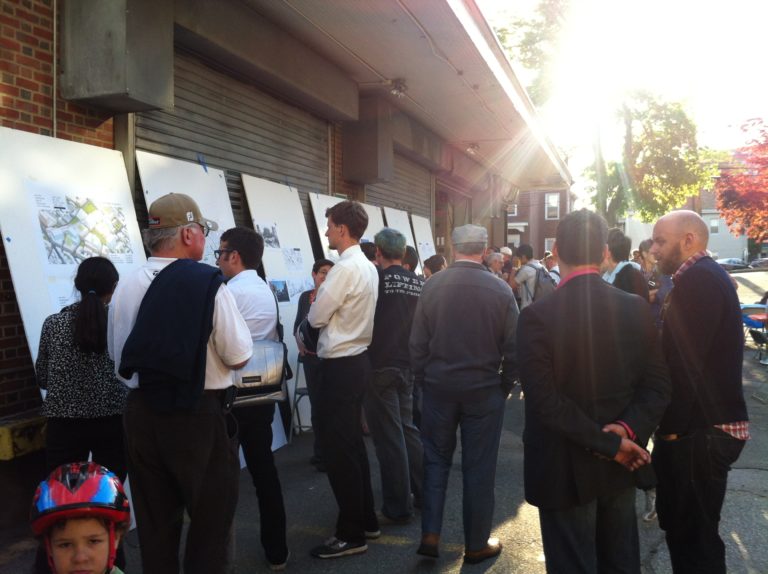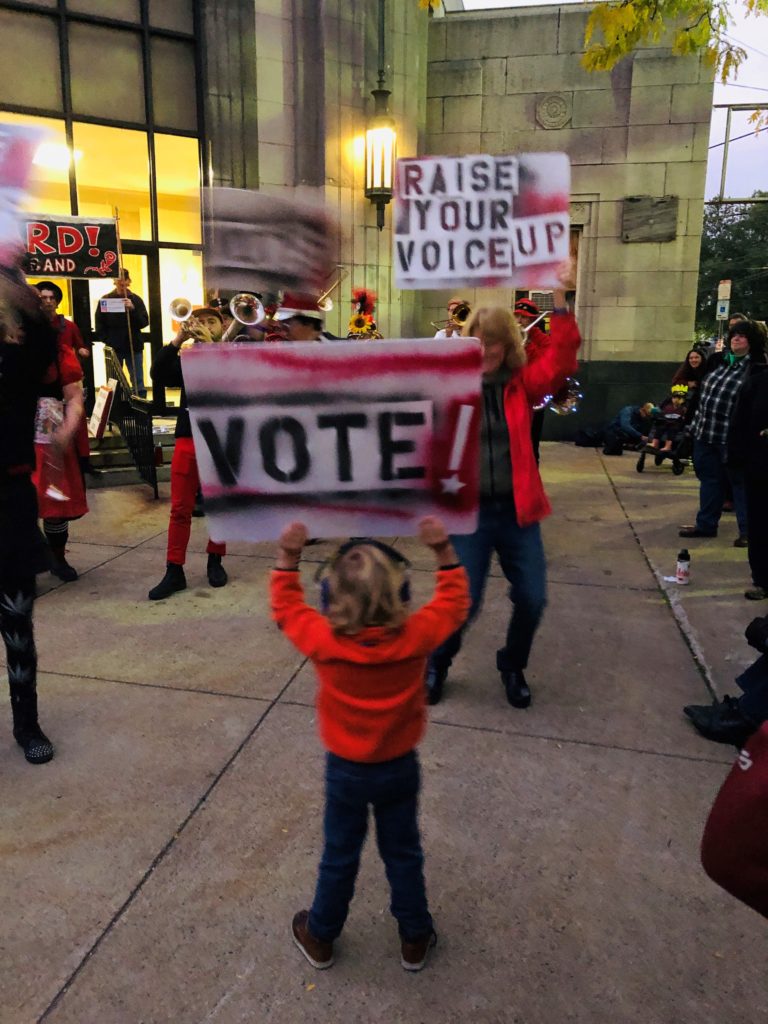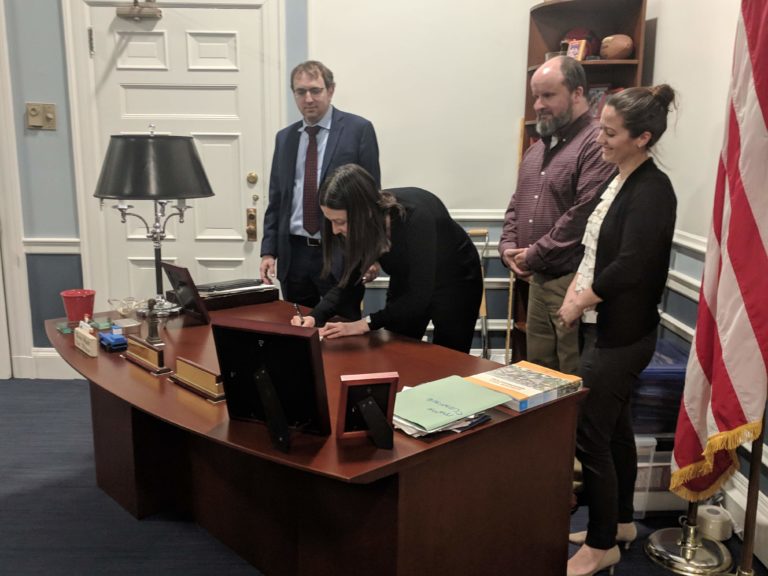SomerVision Indicators
City workers, commission members, and boards by race.
The scope of the Community and Governance topic chapter is: civic engagement, diversity, community belonging, constituent service, government processes and structures, committees and commissions, communication, building community and connection.
The Community and Governance topic chapter is new in SomerVision 2040
This chapter is intentionally broad to attempt to capture the unique nature of Somerville. The chapter entails everything from the feeling a new resident has about their adopted city to the procedures and systems that City Hall uses to engage its constituents. To understand this topic fully and dive into a level of detail that allows for specific goals and tangible action items, this chapter is divided into two sections: Community Ties and Governance.
COMMUNITY TIES
Community ties make up the fabric of our city. They are the conversations between neighbors; the varied connections between residents of different ages, backgrounds, and life-paths; and each resident’s sense of belonging in Somerville that make this city great. This section focuses on the community ties that already exist in Somerville, the challenges and opportunities they face, and the ways that they should be strengthened and deepened.
STRENGTHS
For many people, Somerville has long been an attractive place to live because of its strong sense of community. This sense of community was supported by a number of factors that we should work to preserve going forward. One of these strengths was the diverse population of residents that the city’s history of affordability and convenient access attracted. Somerville was, and still is, home to groups of residents who share common interests: artists and musicians, gardeners and makers, entrepreneurs and community advocates. It has also been a gathering point for immigrants of many backgrounds and nationalities. Many of these resident groups connect over their shared interests or backgrounds and their connections help strengthen the broader community fabric.Somerville’s frequent community events is another advantage. Each year in Somerville, residents participate in Carnaval, Artbeat, Porchfest, Fluff Festival, Somerville Open Studios, Haiti and Brazil hit the ‘Ville, Honk Festival, and many more community-wide events. These events, which are closely related to Somerville residents’ diverse interests and backgrounds, can serve as catalysts for community ties, strengthening residents’ connections to Somerville and each other. Somerville’s robust business community also plays an important role in fostering community ties in the city. Somerville’s varied businesses, many of which are locally owned, provide places for residents to meet and congregate, provide financial support for community events or youth sports teams, and lead to more connections between proprietors, staff, and residents. For many residents of Somerville, the city’s rich community ties are an essential part of its character and appeal and we should work to preserve its strengths and overcome its obstacles in this area.
CHALLENGES & OPPORTUNITIES
Somerville faces multiple threats to the strength and longevity of its community ties. The largest and most immediate threat is the rising costs of housing1 and the resulting displacement of residents. When residents are forced to leave the city because of untenable costs, their departure severs ties with neighbors and erodes the fabric of connections that make the city stronger. The threat of displacement is particularly strong for Somerville’s lower-income residents meaning that their community ties are most at risk. The resulting social isolation was recognized as a risk factor for all ages in the Somerville Wellbeing Report. While many current residents of Somerville are finding it necessary to move away, many new residents are moving to Somerville, especially young professionals. Between 2010 to 2017, the City’s population rose 7%, from 75,754 to 81,361 and the number of residents aged between 25-34 years old increased by an estimated 5,245 people to approximately one third of Somerville’s entire population2. Meanwhile, the number of residents aged 18 and under dropped nearly 20% and the number of residents between the ages of 35-54 also decreased3. The rapid influx of new residents means new community ties need to be created so that new residents feel a part of the broader community. In addition, the concentration of any one age group poses a potential threat to the sense of belonging and community ties of residents in other age groups.
GOALS & TAKEAWAYS
Knowing the importance of community ties for the happiness and health of our city, Somerville must work to defend and strengthen this fabric of relationships. Somerville should prioritize the following goals and take action to advance them.Support families and promote their longevity in Somerville. Families have long been a building block of community in Somerville. Families often prefer to stay in one place longer and have more reasons to connect with the larger community (for example through schools, sports, activities) than the average individual. As a result, families can play an essential role in building the rich community fabric we value. We need to prioritize helping Somerville residents who want to stay in the city do so and devote significant resources towards supporting those communities who are most at risk of displacement. Fight displacement. One of the largest threats to the community ties that we value so much is the rapid displacement of existing residents. When a long-time resident or family is displaced from Somerville, not only are their ties severed, but the entire fabric of community ties gets weaker. We should prioritize helping Somerville residents who want to stay in the city do so and lend extra support to those communities most at risk Help all residents connect. The current reality is that Somerville’s population has seen high levels of turnover4. In addition to resisting the displacement of current residents, we should actively welcome new residents and be deliberate about facilitating connections between all members of the community.
Did you know that the City gets about 100,000 calls to the 311 system yearly? The calls are picked up quickly (less than 20 second) and hold times are less than 30 seconds. The average call time is about 2:30. Have a question? Give the City a ring at 3-1-1 from a landline phone or 617-666-3311 from a cell phone or outside of Somerville.
POTENTIAL TASKS
- Incorporate equity goals into new neighborhood plans and development proposals to embed the needs of marginalized communities into the planning process.
- Consider displacement as a critical risk in new city planning or policy and work to both reduce the risk of displacement and to support those who are most vulnerable to it. Invest in the Office of Housing Stability.
- Study the needs of Somerville’s families to determine root causes of family displacement and migration.
- Establish design guidelines for family housing and zoning requirements for minimum percentages of family units (2 and 3-bedroom) in developments.
- Create and preserve public spaces that enable and encourage connection between residents (for example community gardens, parks and playgrounds, recreational spaces, the community path, public plazas, etc.).
- Review permitting processes and reduce red-tape associated with holding community events.
- Encourage cross-generational connections in the community such as paired living situations, volunteer opportunities, and community relations committees.
- Enhance the welcome card for new residents to go beyond logistical needs to help them connect with community groups, participate in events, and share their voice in the city’s decision-making.
GOVERNANCE
Governance is how our community makes collective decisions and acts on them. It covers our city’s government, the elected officials and professional staff that power it, and the structure within which they operate. It also includes the systems and processes that they use to make decisions and the nature of their discourse with Somerville’s residents. Beyond just the city’s government though, this section covers Somerville residents’ civic engagement, their ability to understand the decisions being made – and to influence them, and the effectiveness of their organizations.
STRENGTHS
Somerville already benefits from several important elements of good governance. These strengths come both from its residents and their active, organized participation, and from the government itself, whose staff and elected officials have moved towards greater transparency and responsiveness.Somerville has a group of committed, engaged residents who participate actively in the City’s decision-making processes. These residents attend the numerous community meetings about topics such as the Green Line Extension, Union Square Redevelopment, and the Somerville High School renovation. These residents sit on the City’s numerous commissions and spearhead community organizations such as the Gilman Square Neighborhood Association, Union Square Neighborhood Council, and East Somerville Main Streets. Many of these residents bring relevant knowledge and experience along with their participation.In addition, Somerville’s government has several existing strengths. Although less well-funded than its neighboring governments in Cambridge and Boston, Somerville’s tax levy in FY19 was $155M, the 12th highest in the state5. Also, the city’s multi-decade rise in appeal, its growing regional stature, and its track-record of innovative measures enhances its ability to meet the community’s goals. Finally, the City has already built a reputation of responsive government, investing in systems such as 311, encouraging community input through neighborhood planning, and fostering an open relationship with Somerville’s business community which was lauded at the SomerVision Business Owners Forum. Hopefully these strengths will help Somerville effectively address the challenges and opportunities it still faces.
CHALLENGES & OPPORTUNITIES
Although Somerville’s governance benefits from some strengths, it faces challenges in the extent of the community’s engagement, the speed and transparency of its decision making, and its ability to address issues that are regional in nature. Only a small portion of Somerville residents participate in decisions that influence them. Although the City benefits from an actively engaged segment of the population, this group is small compared to the city’s population. Because there are significant costs to being part of the decision-making process, most residents cannot, or choose not to participate. The time needed to be effective, access to childcare, and language are all barriers for many residents that limit their ability to attend community meetings and public hearings. For others, not understanding what the process is and how to make their voice heard prevents them from having input in the decisions that influence them. In a time when Somerville is undergoing significant changes, ensuring that all residents can have a voice in these changes is a critical challenge facing the city.Another important challenge is the speed and transparency with which decisions are made. It can be difficult for residents to understand how decisions that affect them directly were made and what the reasoning behind them was. Also, some decisions, such as the zoning overhaul, have taken so long to be made that maintaining active participation throughout the process is difficult and the conditions under which decisions are considered has changed. Perhaps Somerville’s greatest challenge in governance is its lack of control over the regional forces that impacts its residents in significant ways. Somerville is a small part of a large metropolitan area and participates in a regional market for housing, relies on a regional system of public transportation, and works in a regional economy. The Sustainable Neighborhoods Working Group Report noted that Somerville housing prices increase when employment opportunities grow in Boston and Cambridge, and when new construction is limited in surrounding communities, or when MBTA access is not expanded to new areas. Highways that serve the northeast metro area pollute the air that residents of East Somerville breathe6. Many of the problems that Somerville residents experience have regional causes and will require regional solutions that are beyond the City government’s jurisdiction. Finding ways to build coalitions, inspire action, and enforce collaboration is a critical challenge that the City will need to address in order to tackle its residents’ largest problems.
GOALS AND TAKEAWAYS
An effective, representative, and transparent government is critical to the health of a city. Somerville should prioritize the following goals and take action on them.6 Galvin, Gaby. “Fighting for Breath in Near-Highway Neighborhoods.” Better Air Means Better Health in Somerville Massachusetts, U.S. News & World Report, 10 Apr. 2018, www.usnews.com/news/healthiest-communities/articles/2018-04-10/better-air-means-better-health-in-somerville-massachusetts.Increase transparency and trust in decision-making process. We should increase transparency in City government and help residents to understand the decision-making process. It should be clear to stakeholders, beforehand and afterwards, when key decisions will be made, in what manner, and how they can make their perspective heard.Invite community organizations into the decision-making process. Civic organizations play a valuable role in advocating for the rights and interests of their member communities. The City should actively seek their input and invite them into relevant decision-making processes. Find ways to drive change on a regional level. Many of Somerville’s challenges are regional in nature. We need
EQUITY GOAL
Lower barriers to participation in city governance. There are a number of natural barriers for residents to make their voice heard in the city’s decision-making processes. There’s the time needed to attend numerous community meetings, the accompanying costs such as childcare or transportation, and there’s the attention and knowledge needed to follow various sources of information about the topics under discussion. In addition, there are barriers to specific groups of residents, such as the difficulty in accessing some meeting locations, the timing of meetings, or the language in which they’re held. We should strive to lower all of these barriers for the City and community partners and work to accommodate all residents who want to participate in order to include more diverse voices in the decision-making. SomerVision 2040Topic Chapters40to establish more powerful mechanisms for creating and pushing for regional solutions.
Next City (nextcity.org) profiled Ithaca, New York in a May 2019 article for being (possibly) the first city to offer daycare at all city council and commission meetings. In the article Mayor Svante Myrick stated, “The same people show up at all the meetings, and that can lead to mistakes in decision making…That’s something that’s been haunting me. … The city looks different than the meeting room. [The city is] a lot younger and it’s less white. … We set out to see how we can get more people involved in local government, and this is one of the policies we’ve come up with.” The article also references a recently completed study from Boston University where they analyzed several thousand meeting minutes. The research determined that residents most likely to participate in planning commission meetings across America were “older, male, longtime residents.” Providing childcare might be a way of diversifying feedback on proposed policies.
POTENTIAL TASKS
- Study and implement ways to expand access to critical City meetings. Measures such as providing childcare, offering translation services, scheduling meetings at non-traditional times, and enabling remote attendance through video conferencing technology should be explored. Also, explore engaging and supporting community organizations to help drive or enhance this effort.
- Study the potential impacts of Somerville’s government structure and ensure that it is conducive to maximum engagement and fair representation.
- Actively elicit input from a broader cross section of residents, seeking input from community groups and underrepresented populations, including surrounding tenants.
- Create a centralized source of information about all public processes and initiatives, which outlines the planned meetings, the timeline, and clearly shows key milestones, opportunities for involvement, and decision points. Update this outline when the process changes. As part of this, define a standard structure for communicating the purpose of meetings that is included in its posting (e.g. presentation only, public comments, non-binding vote, binding vote, etc.)
- Scale the radius of notification for required abutters notice based on the size of the project.
- Actively reach out to relevant community groups to include them in key decision making processes.
- Explore devolving power, spreading it from central sources like the Mayor’s Office to commissions and citizen groups.
- Recruit diversity on to decision-making commissions.
- Build and leverage coalitions with neighboring communities to tackle shared problems.
- Lobby the Commonwealth to take, enable, and enforce action on regional challenges.
- Explore methods of expanding Somerville’s ability to influence change on a regional level.



